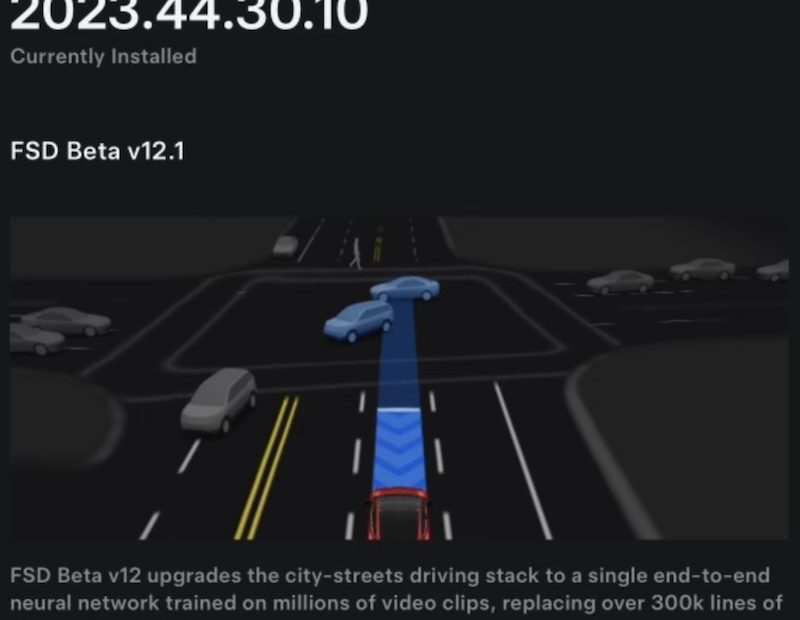Tesla’s hotly anticipated Full Self-Driving (FSD) beta V12.1 just rolled out, and early reviews are glowing. According to Tony Tong, Tesla owner and artificial intelligence expert, the completely revamped system represents a “step change” in capabilities.
Tong shared his insights after testing FSD v12.1 on a 500 mile road trip in his HW3 Model Y. He says the end-to-end neural network dramatically improves the vehicle’s ability to mimic human driving behaviors.
On highways, Tong felt FSD v12 provides a much more natural experience. The AI smoothly handles tricky maneuvers like changing lanes to let faster cars pass, then calmly returning to the fast lane afterwards.
Speed control adapts flawlessly to traffic flow thanks to the neural nets processing real-world data. The AI also shows more patience when changing lanes, avoiding previous versions’ hesitant “halfway” lane shifts.
But FSD’s past struggles on complex urban roads concerned Tong most. He cites problematic “neighborhood laneless road snaking” as an example that stumped earlier versions, AI would weave left and right on single lanes wide enough for parking.
Remarkably, v12.1 solves this with aplomb by mimicking safe human steering down such roads. Tong says his wife can no longer discern whether he or the Tesla is driving based on the AI’s human-like control actions.
According to Tong, FSD v12 is also noticeably gentler navigating bumps, slowing to 10 mph and producing a “super smooth” ride. At stop signs, it still pauses longer than ideal before proceeding. But Tong acknowledges stopping patiently does increase safety, even if drivers behind him grow impatient.
Like Tesla notes, the AI still requires training for precipitation, snowy conditions, and unusual road hazards like potholes. Tong says FSD can also misjudge appropriate speeds for certain signs, like overly slow 40 mph limits on highways. He must manually accelerate in such cases.
Nonetheless, Tong believes neural network-based controls represent the definitive path forward for autonomous driving. He regrets Tesla didn’t adopt this pure AI approach years ago rather than fruitlessly tuning traditional code.
With the new architecture solving once insurmountable urban driving challenges, Tong sees virtually unlimited potential. As Tesla feeds the AI exponentially more real-world data, FSD’s trajectory toward full autonomy looks increasingly clear.
Tong sums up FSD v12 as a true “step change” that finally enables the system to intuitively mimic human behavior behind the wheel. For him, the breakthrough means self-driving cars have turned the corner. It’s now just a matter of amassing training miles.
If Tong’s enthusiastic assessment proves accurate, Tesla may have finally cracked the code to deliver fully autonomous robotaxis sooner than skeptics expect.
Related Post: Tesla Rolls Out FSD v12 to Select Employees, Confirmation from CEO Elon Musk
